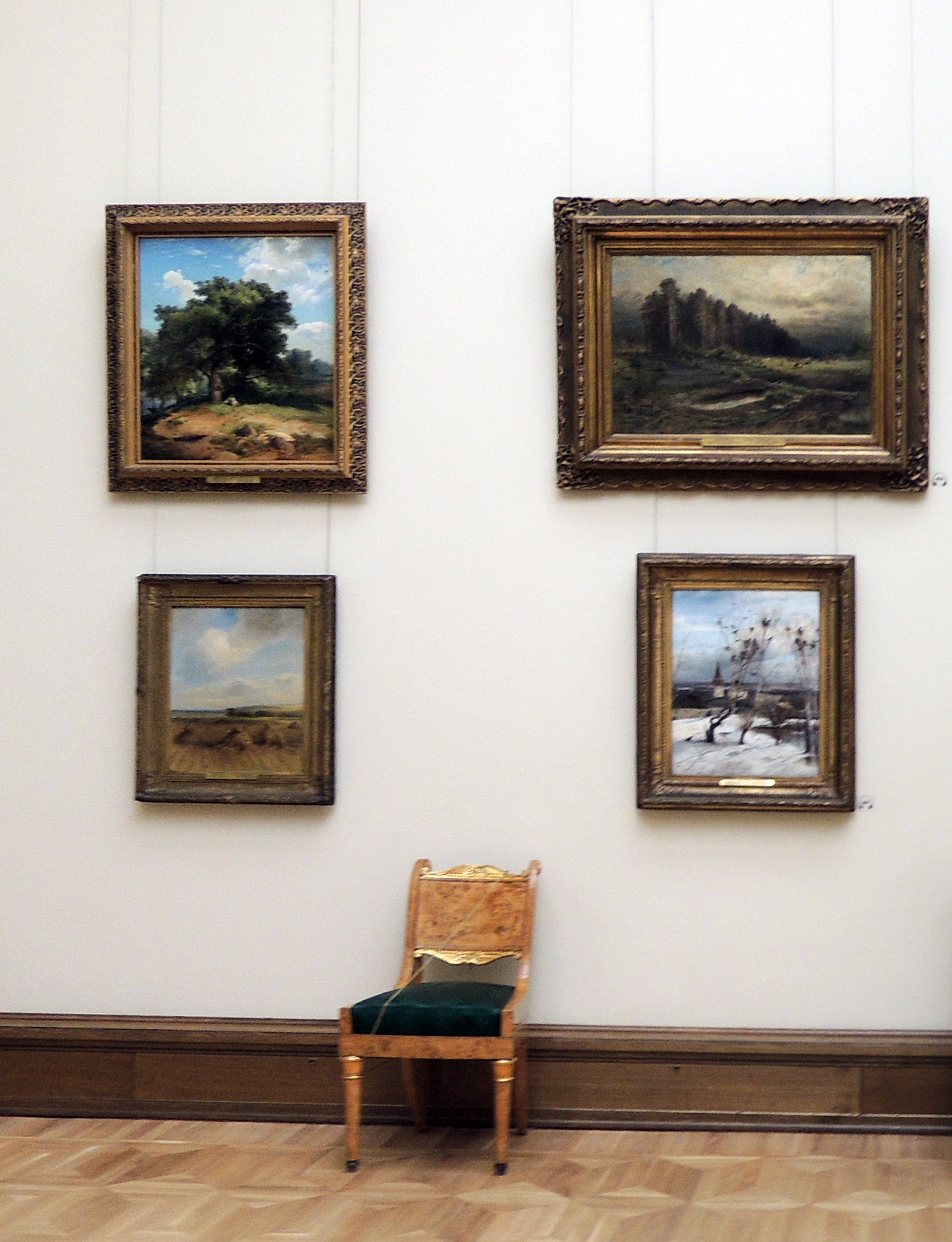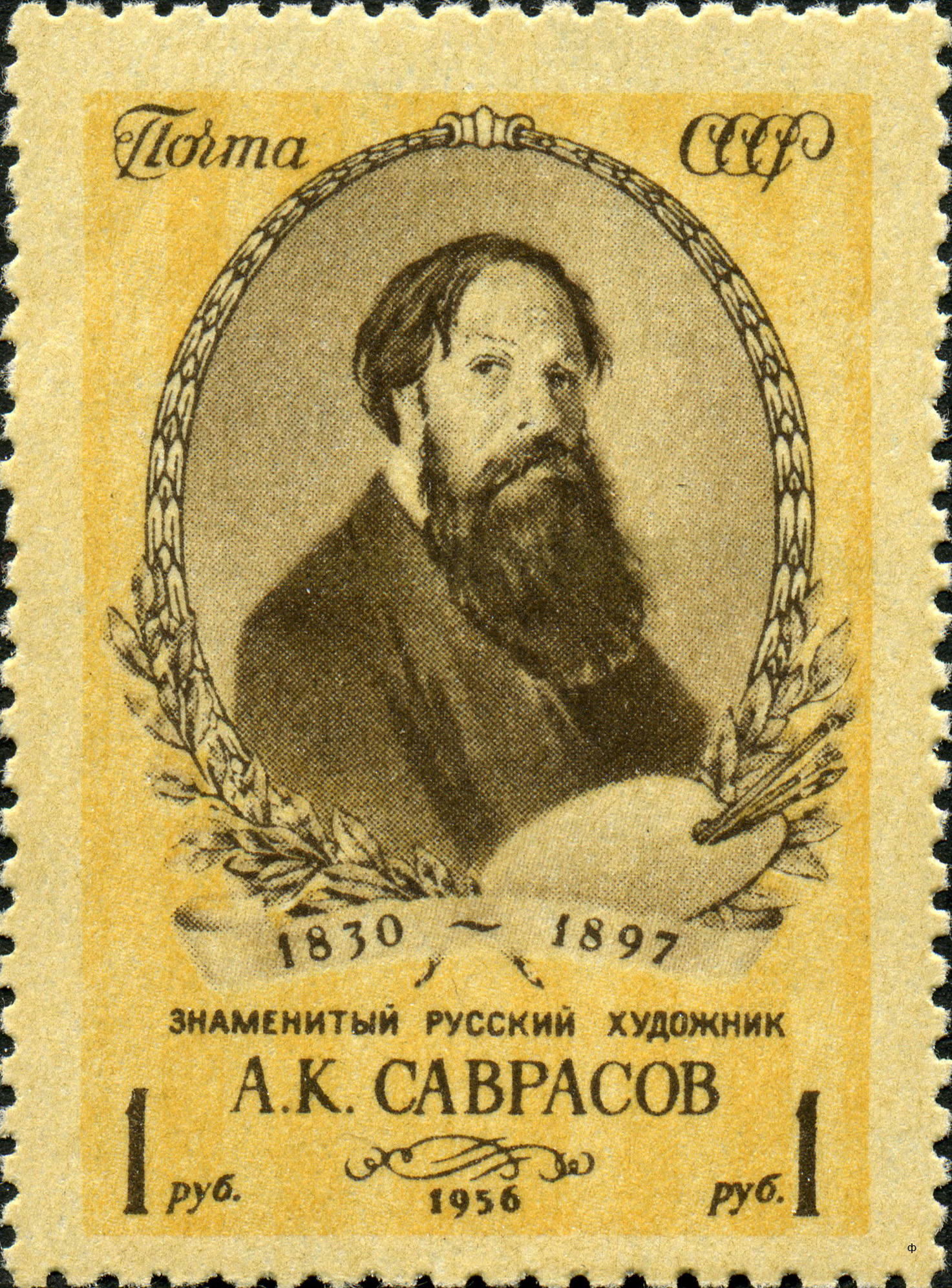|
The Rooks Have Returned
''The Rooks Have Returned'' () is a widely known landscape painting by Russian painter Alexei Savrasov (1830–1897). It was created in 1871 and is kept in the State Tretyakov Gallery (inv. 828). The size of the painting is 62 × 48.5 cm. The painting is considered Savrasov's most famous work, and its appearance is regarded as "an important stage in the development of Russian landscape painting." Savrasov began working on ''The Rooks'' in March 1871. The Study (art), studies for the future painting were done by the artist during his trip to the Kostroma Governorate, when he was in the village of Molvitino (now the village of Susanino, Kostroma Oblast). The prototype of the church depicted in the painting is the , built in the late 17th century. The place where the artist worked is confirmed by his inscription made in the lower left corner of the canvas: "1871. S. Molvitino. A. Savrasov." Some researchers of Savrasov's work believe that the very first drawings and studies for the pa ... [...More Info...] [...Related Items...] OR: [Wikipedia] [Google] [Baidu] |
Alexei Savrasov
Alexei Kondratyevich Savrasov (; – ) was a Russian landscape painter and creator of the ''lyrical landscape'' style. The most famous and a celebrated work is '' The Rooks Have Returned''. Biography Savrasov was born in Moscow, Russian Empire, into the family of a merchant. He began to draw early and in 1838 he enrolled as a student of professor Karl Rabus at the Moscow School of Painting, Sculpture and Architecture (MSPSA). He graduated in 1850 and immediately began to specialize in landscape painting. In 1852, he traveled to Ukraine. Then, in 1854 by the invitation of the Grand Duchess Maria Nikolayevna, President of the Imperial Academy of Arts, he moved to the neighborhood of St. Petersburg. In 1857, Savrasov became a teacher at the MSPSA. His best students, Isaac Levitan and Konstantin Korovin, remembered their teacher with admiration and gratitude. In 1857, he married Sophia Karlovna Hertz, sister of the art historian Karl Hertz (1820-1883). In their home t ... [...More Info...] [...Related Items...] OR: [Wikipedia] [Google] [Baidu] |
Isaac Levitan
Isaac Ilyich Levitan (; – ) was a Russian landscape painter who advanced the genre of the "mood landscape". Life and work Youth Isaac Levitan was born in a ''shtetl'' of Kibarty, Augustów Governorate in Congress Poland, a part of the Russian Empire (present-day Lithuania) into a poor but educated Jewish family. His father Elyashiv Levitan was the son of a rabbi, completed a Yeshiva and was self-educated. He taught German and French in Kowno and later worked as a translator at a railway bridge construction for a French building company. At the beginning of 1870 the Levitan family moved to Moscow. In September 1873, Isaac Levitan entered the Moscow School of Painting, Sculpture and Architecture where his older brother Avel had already studied for two years. After a year in the copying class Isaac transferred into a naturalistic class, and soon thereafter into a landscape class. Levitan's teachers were the famous Alexei Savrasov, Vasily Perov and Vasily Polenov. In 1 ... [...More Info...] [...Related Items...] OR: [Wikipedia] [Google] [Baidu] |
Artel
An artel () was any of several types of cooperative associations of workers in pre-revolutionary Russia. In the Soviet Union, the term was applied to enterprises in the Soviet Union, production cooperatives. They began centuries ago but were especially prevalent from the time of the emancipation reform of 1861, emancipation of the Russian serfs (1861) through the 1950s. In the later Soviet period (1960s–1980s), the term was mostly phased out with the complete monopolization of the economy of the Soviet Union, Soviet economy by the state. Artels were semiformal associations for craft, artisan, and light industry, light industrial enterprises. Often artel members worked far from home and lived as a Intentional community, commune. Payment for a completed job was distributed according to verbal agreements, quite often in equal shares. Often artels were for seasonal industry; fishing, hunting, harvesting of crops, logging, and gathering of wild plants, berries, and mushrooms were pri ... [...More Info...] [...Related Items...] OR: [Wikipedia] [Google] [Baidu] |
Kostroma Oblast
Kostroma Oblast () is a federal subjects of Russia, federal subject of Russia (an oblast). Its administrative center is the types of inhabited localities in Russia, city of Kostroma and its population as of the Russian Census (2021), 2021 Census is 580,976. It was formed on August 13, 1944 on the territory detached from neighboring Yaroslavl Oblast. Textile industries have been developed there since the early 18th century. Its major historic towns include Kostroma, Sharya, Nerekhta, Kostroma Oblast, Nerekhta, Galich, Russia, Galich, Soligalich, and Makaryev. History From c. 300 CE the current area of Kostroma, with the exception of the area east of the Unzha River, was part of the Finno-Ugric peoples' lands, such as the Merya people, Merya people and their loose tribal confederation. During the Neolithic era, comb-ceramics replaced prafinno-Ugric Volosovo. At the turn of 3rd and 2nd millennia BCE, the Fatyanovo culture arrived in the area, later to be assimilated into the tri ... [...More Info...] [...Related Items...] OR: [Wikipedia] [Google] [Baidu] |
Susaninsky District
Susaninsky District () is an administrativeLaw #112-4-ZKO and municipalLaw #237-ZKO district (raion), one of the twenty-four in Kostroma Oblast, Russia. It is located in the west of the oblast. The area of the district is . Its administrative center is the urban locality (an urban-type settlement Urban-type settlement, abbreviated: ; , abbreviated: ; ; ; ; . is an official designation for lesser urbanized settlements, used in several Central and Eastern Europe, Central and Eastern European countries. The term was primarily used in the So ...) of Susanino. Population: 9,184 ( 2002 Census); The population of Susanino accounts for 52.6% of the district's total population. References Notes Sources * * * * * {{Use mdy dates, date=April 2013 Districts of Kostroma Oblast ... [...More Info...] [...Related Items...] OR: [Wikipedia] [Google] [Baidu] |
Buysky Uyezd
Buysky Uyezd (''Буйский уезд'') was one of the subdivisions of the Kostroma Governorate of the Russian Empire. It was situated in the northwestern part of the governorate. Its administrative centre was Buy. Demographics At the time of the Russian Empire Census of 1897, Buysky Uyezd had a population of 70,687. Of these, 99.9% spoke Russian Russian(s) may refer to: *Russians (), an ethnic group of the East Slavic peoples, primarily living in Russia and neighboring countries *A citizen of Russia *Russian language, the most widely spoken of the Slavic languages *''The Russians'', a b ... as their native language. Демоскоп Weekly - Приложение. Справочник статистических показателей References [...More Info...] [...Related Items...] OR: [Wikipedia] [Google] [Baidu] |
Sled
A sled, skid, sledge, or sleigh is a land vehicle that slides across a surface, usually of ice or snow. It is built with either a smooth underside or a separate body supported by two or more smooth, relatively narrow, longitudinal runners similar in principle to skis. This reduces the amount of friction, which helps to carry heavy loads. Some designs are used to transport passengers or cargo across relatively level ground. Others are designed to go downhill for recreation, particularly by children, or competition (compare cross-country skiing with its downhill cousin). Shades of meaning differentiating the three terms often reflect regional variations depending on historical uses and prevailing climate. In British English, ''sledge'' is the general term, and more common than ''sled''. '' Toboggan'' is sometimes used synonymously with ''sledge'' but more often to refer to a particular type of sledge without runners. ''Sleigh'' refers to a moderate to large-sized, usuall ... [...More Info...] [...Related Items...] OR: [Wikipedia] [Google] [Baidu] |
Railway
Rail transport (also known as train transport) is a means of transport using wheeled vehicles running in railway track, tracks, which usually consist of two parallel steel railway track, rails. Rail transport is one of the two primary means of land transport, next to road transport. It is used for about 8% of passenger and rail freight transport, freight transport globally, thanks to its Energy efficiency in transport, energy efficiency and potentially high-speed rail, high speed.Rolling stock on rails generally encounters lower friction, frictional resistance than rubber-tyred road vehicles, allowing rail cars to be coupled into longer trains. Power is usually provided by Diesel locomotive, diesel or Electric locomotive, electric locomotives. While railway transport is capital intensity, capital-intensive and less flexible than road transport, it can carry heavy loads of passengers and cargo with greater energy efficiency and safety. Precursors of railways driven by human or an ... [...More Info...] [...Related Items...] OR: [Wikipedia] [Google] [Baidu] |
Verst
A verst (; ) is an obsolete Russian unit of length, defined as 500 sazhen. This makes a verst equal to . Plurals and variants In the English language, ''verst'' is singular with the normal plural ''versts''. In Russian, the nominative singular is , but the form usually used with numbers is the genitive plural —10 verst, 25 verst, etc.—whence the English form. A (, literally "border verst") is twice as long as a verst. The verst of the 17th century was 700 sazhens or 1.49 km as against the 500 sazhens or 1.067 km it became at the time of Peter the Great. Finnish ''virsta'' In Finland, a was 1,068.84 m according to the Swedish standard, defined in 1827 as of a , the Finnish language name for the pre-metric Swedish '' mil'', used in Finland since the early 17th century (see Obsolete Finnish units of measurement), or 600 (Swedish fathoms, 1.781 m). Metrication replaced with the kilometre The kilometre (SI symbol: km; or ), spelt kilometer in American E ... [...More Info...] [...Related Items...] OR: [Wikipedia] [Google] [Baidu] |
Kostroma
Kostroma (, ) is a historic city and the administrative center of Kostroma Oblast, Russia. A part of the Golden Ring of Russian cities, it is located at the confluence of the rivers Volga and Kostroma. In the 2021 census, the population is 267,481. History Under the Rurikids The official founding year of the city is 1152 by Yury Dolgoruky.Official website of KostromaKostroma Today/ref> Since many scholars believe that early Eastern Slavs tribes arrived in modern-day Belarus, Ukraine and western Russia AD 400 to 600, Kostroma could be much older than previously thought. The city has the same name as the East Slavic goddess Kostroma. Like other towns of the Eastern Rus, Kostroma was sacked by the Mongols in 1238. It then constituted a small principality, under leadership of Prince Vasily of Kostroma, a younger brother of the famous Alexander Nevsky. Upon inheriting the grand ducal title in 1271, Vasily didn't leave the town for Vladimir, and his descendants ruled Kostroma f ... [...More Info...] [...Related Items...] OR: [Wikipedia] [Google] [Baidu] |
Volga
The Volga (, ) is the longest river in Europe and the longest endorheic basin river in the world. Situated in Russia, it flows through Central Russia to Southern Russia and into the Caspian Sea. The Volga has a length of , and a catchment area of .«Река Волга» , Russian State Water Registry It is also Europe's largest river in terms of average discharge at delta – between and – and of . It is widely regarded as the national river of |






